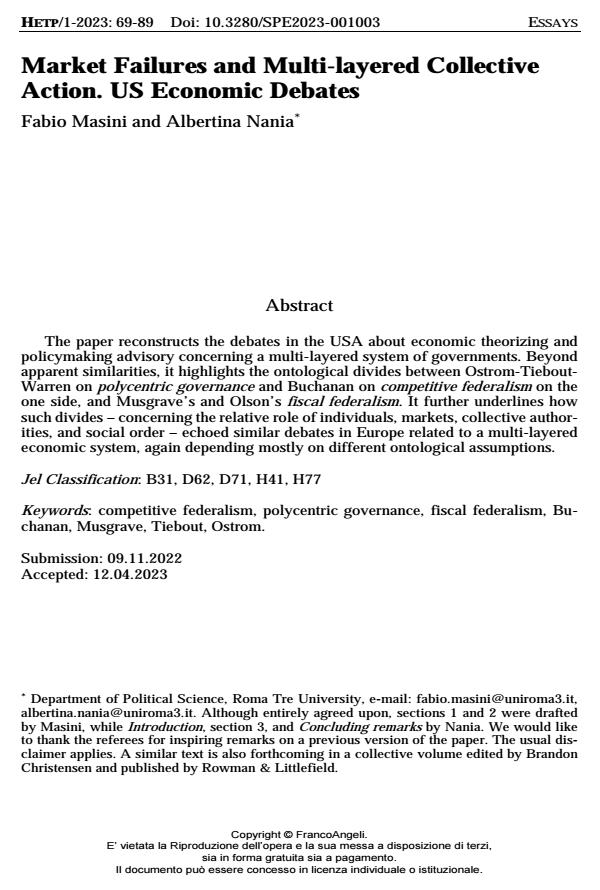Market Failures and Multi-layered Collective Action. US Economic Debates
Journal title HISTORY OF ECONOMIC THOUGHT AND POLICY
Author/s Fabio Masini, Albertina Nania
Publishing Year 2023 Issue 2023/1
Language English Pages 21 P. 69-89 File size 86 KB
DOI 10.3280/SPE2023-001003
DOI is like a bar code for intellectual property: to have more infomation
click here
Below, you can see the article first page
If you want to buy this article in PDF format, you can do it, following the instructions to buy download credits

FrancoAngeli is member of Publishers International Linking Association, Inc (PILA), a not-for-profit association which run the CrossRef service enabling links to and from online scholarly content.
The paper reconstructs the debates in the USA about economic theorizing and policymaking advisory concerning a multi-layered system of governments. Beyond apparent similarities, it highlights the ontological divides between Ostrom-Tiebout- Warren on polycentric governance and Buchanan on competitive federalism on the one side, and Musgrave’s and Olson’s fiscal federalism. It further underlines how such divides - concerning the relative role of individuals, markets, collective author- ities, and social order - echoed similar debates in Europe related to a multi-layered economic system, again depending mostly on different ontological assumptions.
Keywords: competitive federalism, polycentric governance, fiscal federalism, Bu- chanan, Musgrave, Tiebout, Ostrom
Jel codes: B31, D62, D71, H41, H77
Fabio Masini, Albertina Nania, Market Failures and Multi-layered Collective Action. US Economic Debates in "HISTORY OF ECONOMIC THOUGHT AND POLICY" 1/2023, pp 69-89, DOI: 10.3280/SPE2023-001003